A Statistical Analysis of Fluid Interface Fluctuations: Exploring the Role of Viscosity Ratio
Abstract
:1. Introduction
2. Materials and Methods
2.1. Experimental Procedure
2.2. Image Processing
2.3. Occupation Analysis
3. Results
3.1. The Effect of Viscosity on Fluid Dynamics
3.2. The Role of Fluctuations on Fluid Connectivity
3.3. The Evolution of Fluctuations with Viscosity Ratio
3.4. Impact of Fluctuations on the NWP Pore Network
4. Conclusions
Author Contributions
Funding
Institutional Review Board Statement
Data Availability Statement
Acknowledgments
Conflicts of Interest
Abbreviations
| relative occupied volume of fluctuations | |
| maximal relative occupied volume | |
| minimal relative occupied volume | |
| I | value of discrete voxel in scan |
| viscosity ratio | |
| S | saturation |
| average saturation of time series | |
| wetting phase | |
| non wetting phase | |
| region of interest |
Appendix A. Network Analysis


Appendix B. Extracted Pore Network
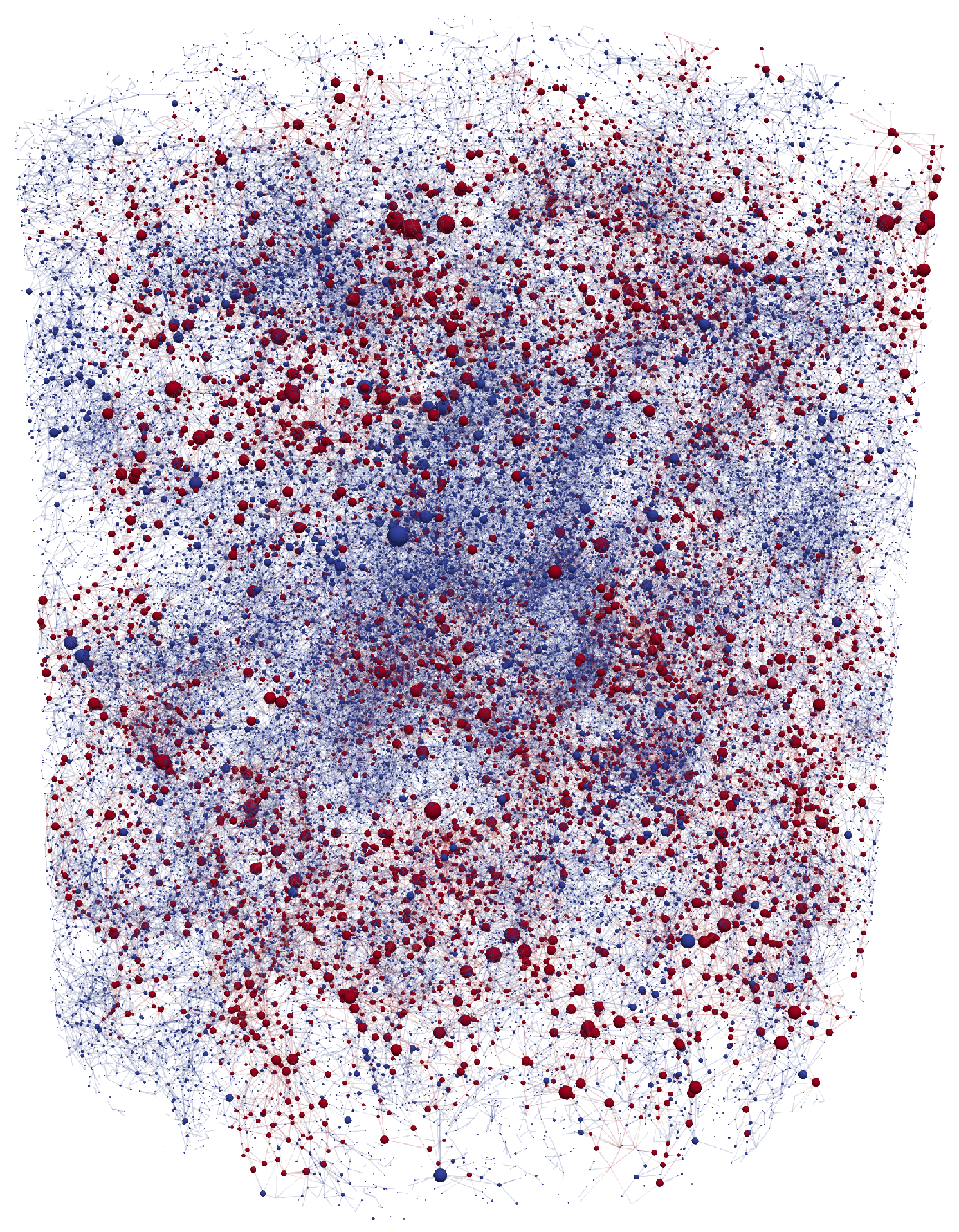
References
- Bickle, M.J. Geological carbon storage. Nat. Geosci. 2009, 2, 815–818. [Google Scholar] [CrossRef]
- Krevor, S.; De Coninck, H.; Gasda, S.E.; Ghaleigh, N.S.; de Gooyert, V.; Hajibeygi, H.; Juanes, R.; Neufeld, J.; Roberts, J.J.; Swennenhuis, F. Subsurface carbon dioxide and hydrogen storage for a sustainable energy future. Nat. Rev. Earth Environ. 2023, 4, 102–118. [Google Scholar] [CrossRef]
- Bo, Z.; Boon, M.; Hajibeygi, H.; Hurter, S. Impact of experimentally measured relative permeability hysteresis on reservoir-scale performance of underground hydrogen storage (UHS). Int. J. Hydrogen Energy 2023, 48, 13527–13542. [Google Scholar] [CrossRef]
- Blunt, M.J. Multiphase Flow in Permeable Media: A Pore-Scale Perspective; Cambridge University Press: Cambridge, UK, 2017. [Google Scholar]
- Bryant, S.; Blunt, M. Prediction of relative permeability in simple porous media. Phys. Rev. A 1992, 46, 2004. [Google Scholar] [CrossRef] [PubMed]
- Ruprecht, C.; Pini, R.; Falta, R.; Benson, S.; Murdoch, L. Hysteretic trapping and relative permeability of CO2 in sandstone at reservoir conditions. Int. J. Greenh. Gas Control 2014, 27, 15–27. [Google Scholar] [CrossRef]
- Burnside, N.; Naylor, M. Review and implications of relative permeability of CO2/brine systems and residual trapping of CO2. Int. J. Greenh. Gas Control 2014, 23, 1–11. [Google Scholar] [CrossRef]
- Reynolds, C.A.; Menke, H.; Andrew, M.; Blunt, M.J.; Krevor, S. Dynamic fluid connectivity during steady-state multiphase flow in a sandstone. Proc. Natl. Acad. Sci. USA 2017, 114, 8187–8192. [Google Scholar] [CrossRef]
- Spurin, C.; Bultreys, T.; Rücker, M.; Garfi, G.; Schlepütz, C.M.; Novak, V.; Berg, S.; Blunt, M.J.; Krevor, S. The development of intermittent multiphase fluid flow pathways through a porous rock. Adv. Water Resour. 2021, 150, 103868. [Google Scholar] [CrossRef]
- Spurin, C.; Bultreys, T.; Bijeljic, B.; Blunt, M.J.; Krevor, S. Mechanisms controlling fluid breakup and reconnection during two-phase flow in porous media. Phys. Rev. E 2019, 100, 043115. [Google Scholar] [CrossRef]
- Zhang, Y.; Bijeljic, B.; Blunt, M.J. Nonlinear multiphase flow in hydrophobic porous media. J. Fluid Mech. 2022, 934, R3. [Google Scholar] [CrossRef]
- Gao, Y.; Raeini, A.Q.; Blunt, M.J.; Bijeljic, B. Pore occupancy, relative permeability and flow intermittency measurements using X-ray micro-tomography in a complex carbonate. Adv. Water Resour. 2019, 129, 56–69. [Google Scholar] [CrossRef]
- Gao, Y.; Lin, Q.; Bijeljic, B.; Blunt, M.J. X-ray microtomography of intermittency in multiphase flow at steady state using a differential imaging method. Water Resour. Res. 2017, 53, 10274–10292. [Google Scholar] [CrossRef] [PubMed]
- Rücker, M.; Georgiadis, A.; Armstrong, R.T.; Ott, H.; Brussee, N.; van der Linde, H.; Simon, L.; Enzmann, F.; Kersten, M.; Berg, S. The origin of non-thermal fluctuations in multiphase flow in porous media. Front. Water 2021, 3, 671399. [Google Scholar] [CrossRef]
- Rücker, M.; Berg, S.; Armstrong, R.; Georgiadis, A.; Ott, H.; Schwing, A.; Neiteler, R.; Brussee, N.; Makurat, A.; Leu, L.; et al. From connected pathway flow to ganglion dynamics. Geophys. Res. Lett. 2015, 42, 3888–3894. [Google Scholar] [CrossRef]
- Datta, S.S.; Ramakrishnan, T.; Weitz, D.A. Mobilization of a trapped non-wetting fluid from a three-dimensional porous medium. Phys. Fluids 2014, 26, 022002. [Google Scholar] [CrossRef]
- Tallakstad, K.T.; Knudsen, H.A.; Ramstad, T.; Løvoll, G.; Måløy, K.J.; Toussaint, R.; Flekkøy, E.G. Steady-State Two-Phase Flow in Porous Media: Statistics and Transport Properties. Phys. Rev. Lett. 2009, 102, 074502. [Google Scholar] [CrossRef]
- Tallakstad, K.T.; Løvoll, G.; Knudsen, H.A.; Ramstad, T.; Flekkøy, E.G.; Måløy, K.J. Steady-state, simultaneous two-phase flow in porous media: An experimental study. Phys. Rev. E 2009, 80, 036308. [Google Scholar] [CrossRef] [PubMed]
- Spurin, C.; Bultreys, T.; Bijeljic, B.; Blunt, M.J.; Krevor, S. Intermittent fluid connectivity during two-phase flow in a heterogeneous carbonate rock. Phys. Rev. E 2019, 100, 043103. [Google Scholar] [CrossRef] [PubMed]
- Armstrong, R.T.; McClure, J.E.; Berrill, M.A.; Rücker, M.; Schlüter, S.; Berg, S. Beyond Darcy’s law: The role of phase topology and ganglion dynamics for two-fluid flow. Phys. Rev. E 2016, 94, 043113. [Google Scholar] [CrossRef]
- Nordbotten, J.M.; Celia, M.A.; Bachu, S. Injection and storage of CO2 in deep saline aquifers: Analytical solution for CO2 plume evolution during injection. Transp. Porous Media 2005, 58, 339–360. [Google Scholar] [CrossRef]
- MacMinn, C.W.; Juanes, R. Post-injection spreading and trapping of CO2 in saline aquifers: Impact of the plume shape at the end of injection. Comput. Geosci. 2009, 13, 483–491. [Google Scholar] [CrossRef]
- Spurin, C.; Bultreys, T.; Rücker, M.; Garfi, G.; Schlepütz, C.M.; Novak, V.; Berg, S.; Blunt, M.J.; Krevor, S. Real-time imaging reveals distinct pore-scale dynamics during transient and equilibrium subsurface multiphase flow. Water Resour. Res. 2020, 56, e2020WR028287. [Google Scholar] [CrossRef]
- Takamura, K.; Fischer, H.; Morrow, N.R. Physical properties of aqueous glycerol solutions. J. Pet. Sci. Eng. 2012, 98, 50–60. [Google Scholar] [CrossRef]
- Volk, A.; Kähler, C.J. Density model for aqueous glycerol solutions. Exp. Fluids 2018, 59, 75. [Google Scholar] [CrossRef]
- Mokso, R.; Schlepütz, C.M.; Theidel, G.; Billich, H.; Schmid, E.; Celcer, T.; Mikuljan, G.; Sala, L.; Marone, F.; Schlumpf, N.; et al. GigaFRoST: The gigabit fast readout system for tomography. J. Synchrotron Radiat. 2017, 24, 1250–1259. [Google Scholar] [CrossRef]
- Bührer, M.; Stampanoni, M.; Rochet, X.; Büchi, F.; Eller, J.; Marone, F. High-numerical-aperture macroscope optics for time-resolved experiments. J. Synchrotron Radiat. 2019, 26, 1161–1172. [Google Scholar] [CrossRef]
- Spurin, C.; Ellman, S.; Sherburn, D.; Bultreys, T.; Tchelepi, H. Python workflow for segmenting multiphase flow in porous rocks. EarthArXiv 2023. [Google Scholar] [CrossRef]
- Raeini, A.Q.; Bijeljic, B.; Blunt, M.J. Generalized network modeling: Network extraction as a coarse-scale discretization of the void space of porous media. Phys. Rev. E 2017, 96, 013312. [Google Scholar] [CrossRef]
- Tang, Y.; Li, M.; Bernabé, Y.; Zhao, J. Viscous fingering and preferential flow paths in heterogeneous porous media. J. Geophys. Res. Solid Earth 2020, 125, e2019JB019306. [Google Scholar] [CrossRef]
- Wang, Y.; Zhang, C.; Wei, N.; Oostrom, M.; Wietsma, T.W.; Li, X.; Bonneville, A. Experimental study of crossover from capillary to viscous fingering for supercritical CO2–Water displacement in a homogeneous pore network. Environ. Sci. Technol. 2013, 47, 212–218. [Google Scholar] [CrossRef]
- Andrew, M.; Bijeljic, B.; Blunt, M.J. Pore-scale imaging of trapped supercritical carbon dioxide in sandstones and carbonates. Int. J. Greenh. Gas Control 2014, 22, 1–14. [Google Scholar] [CrossRef]
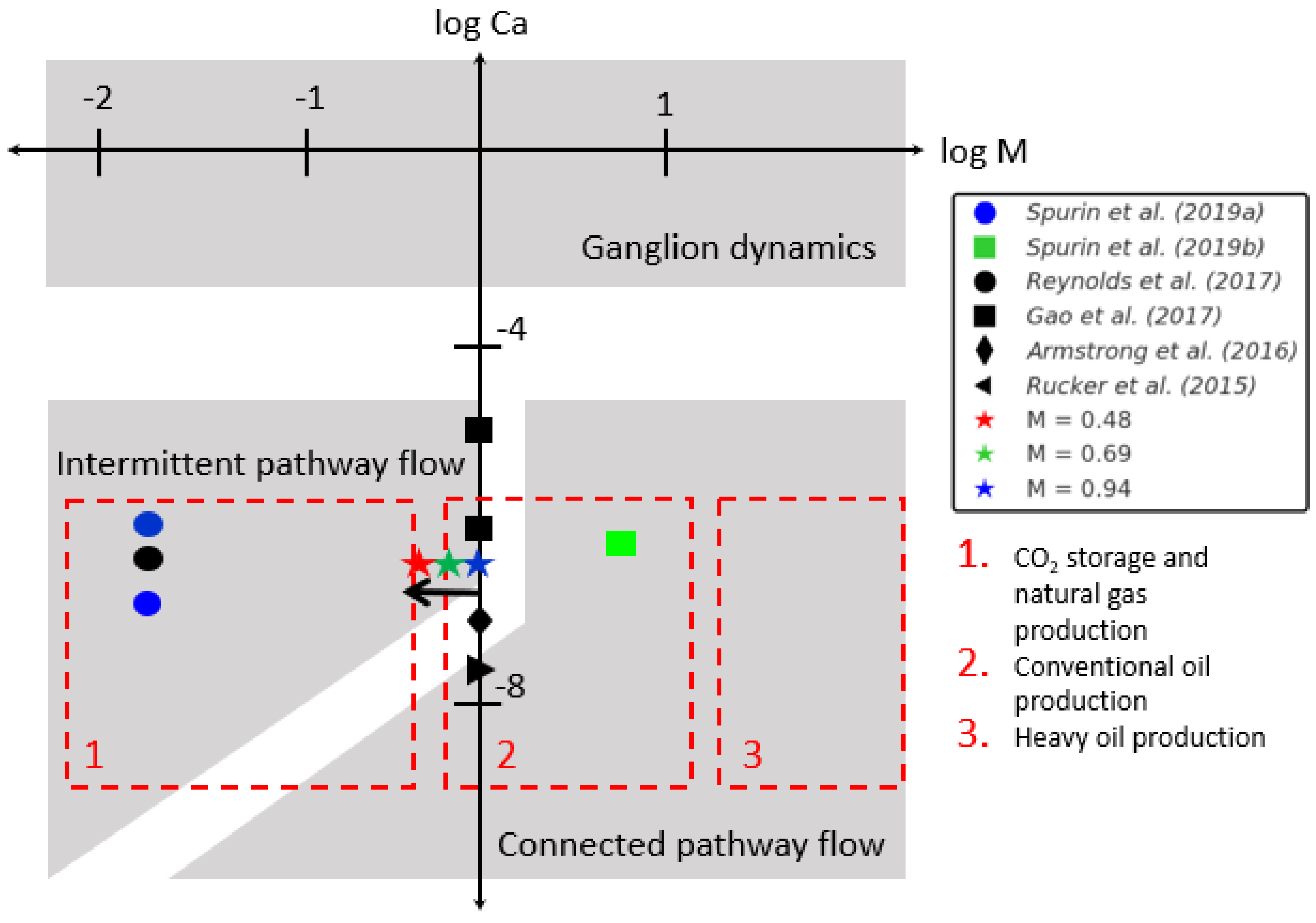
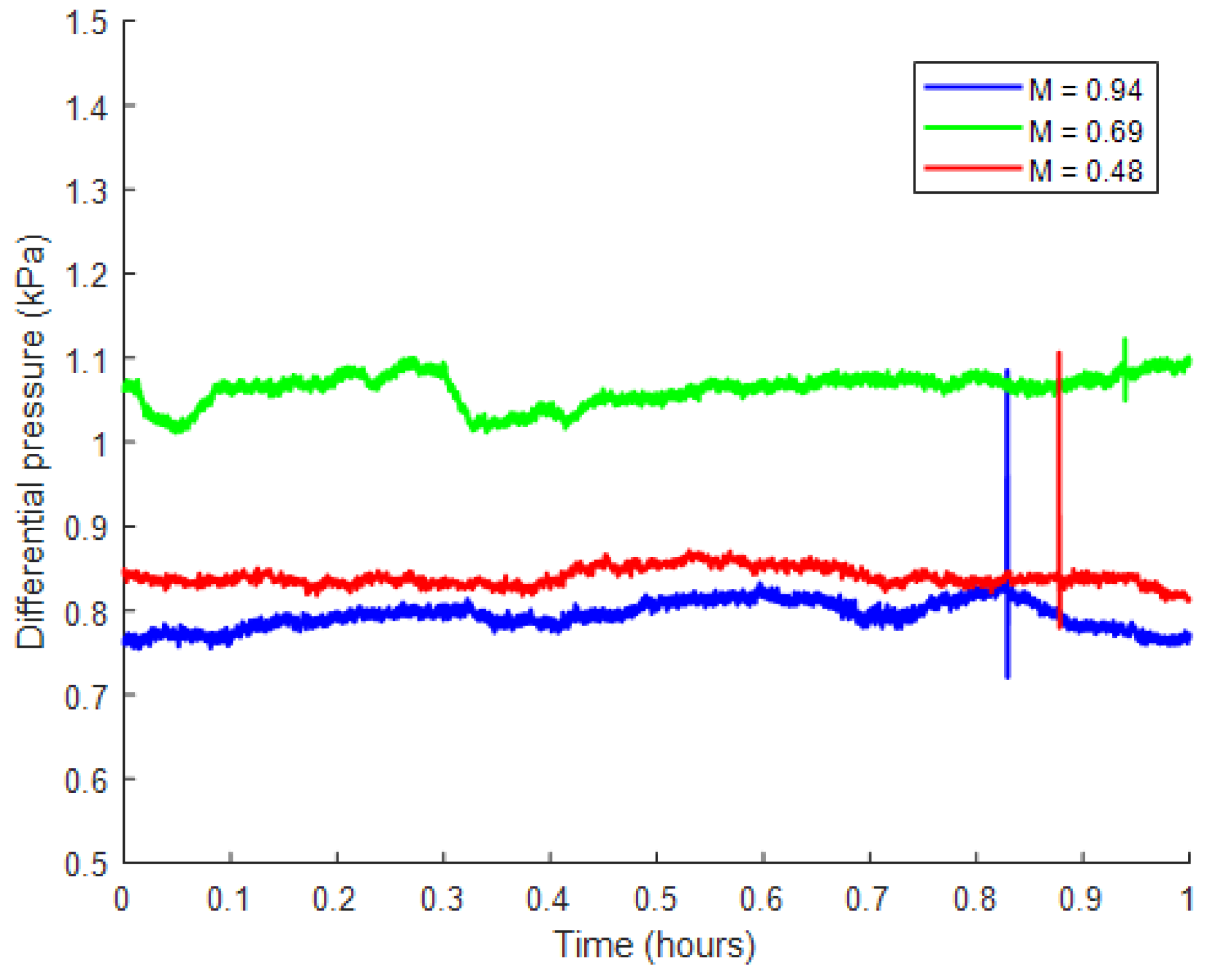
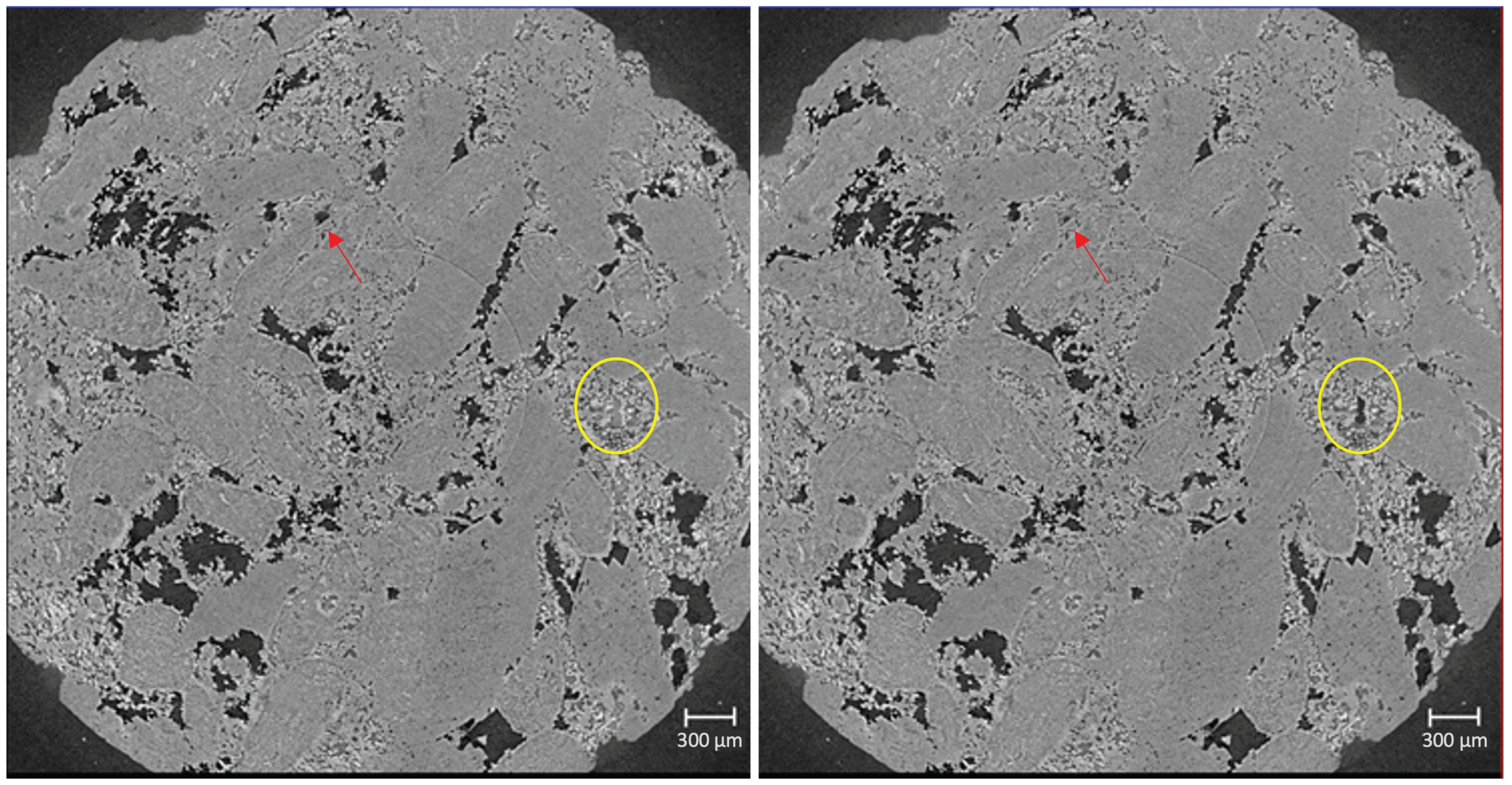

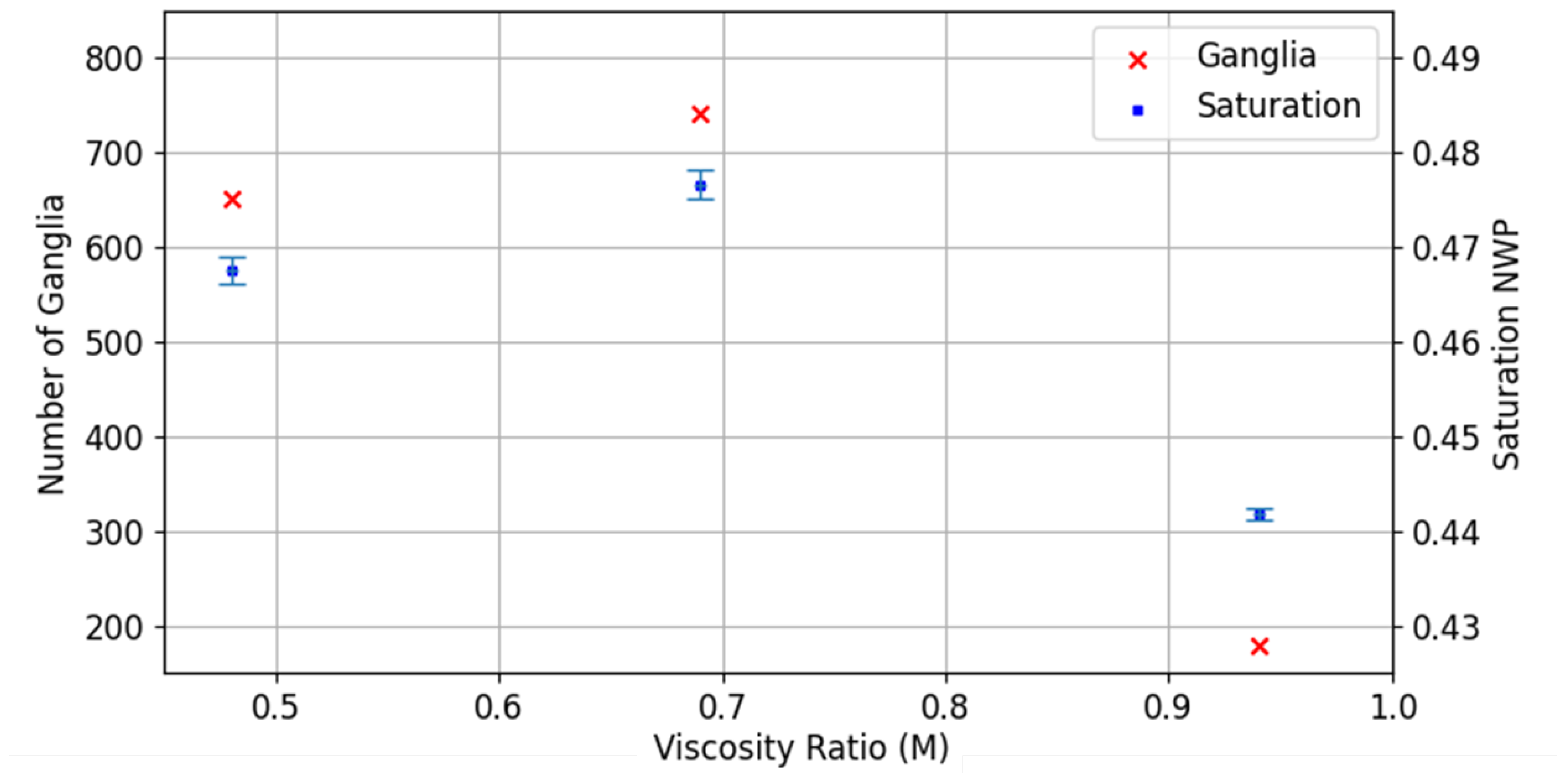



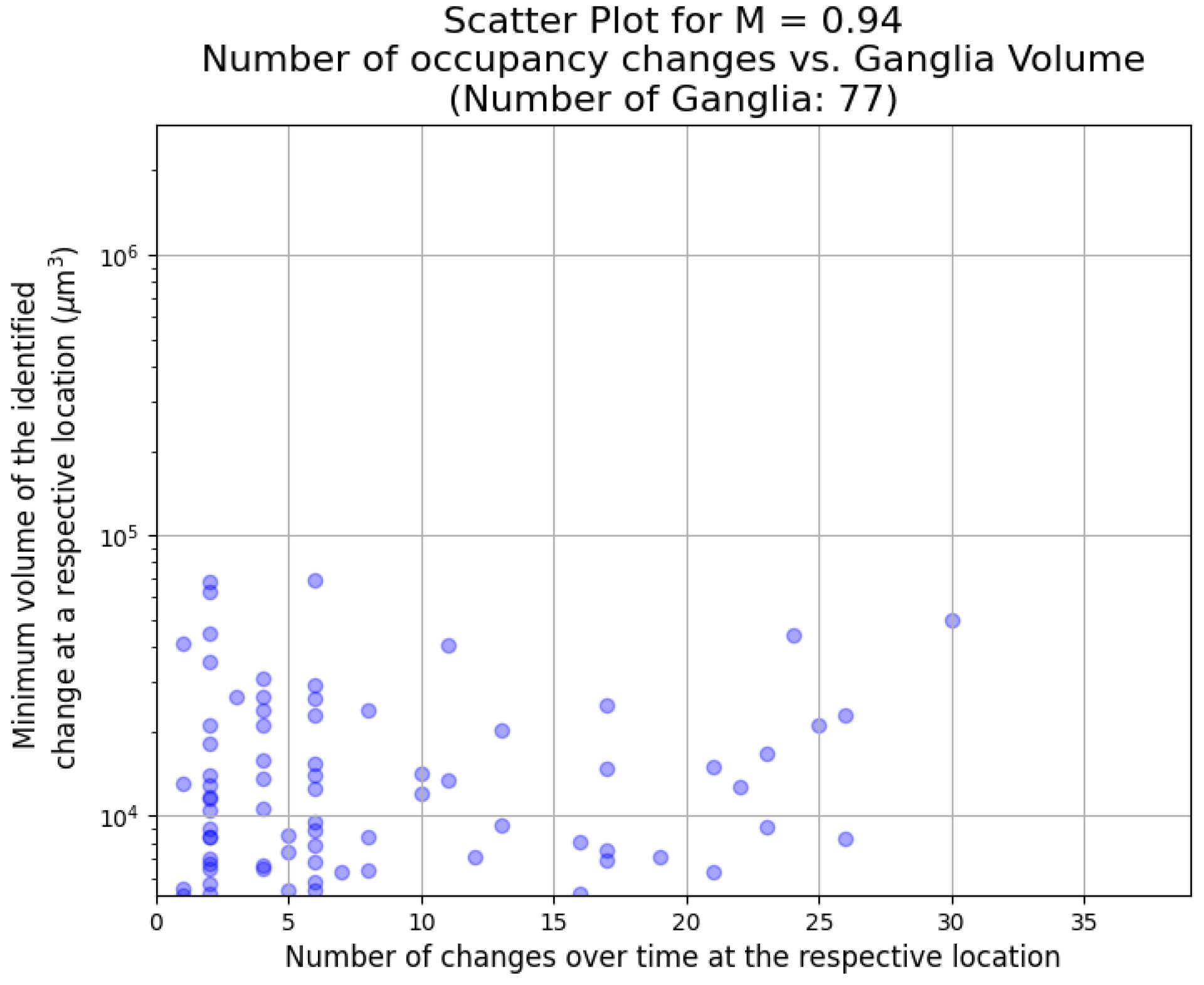
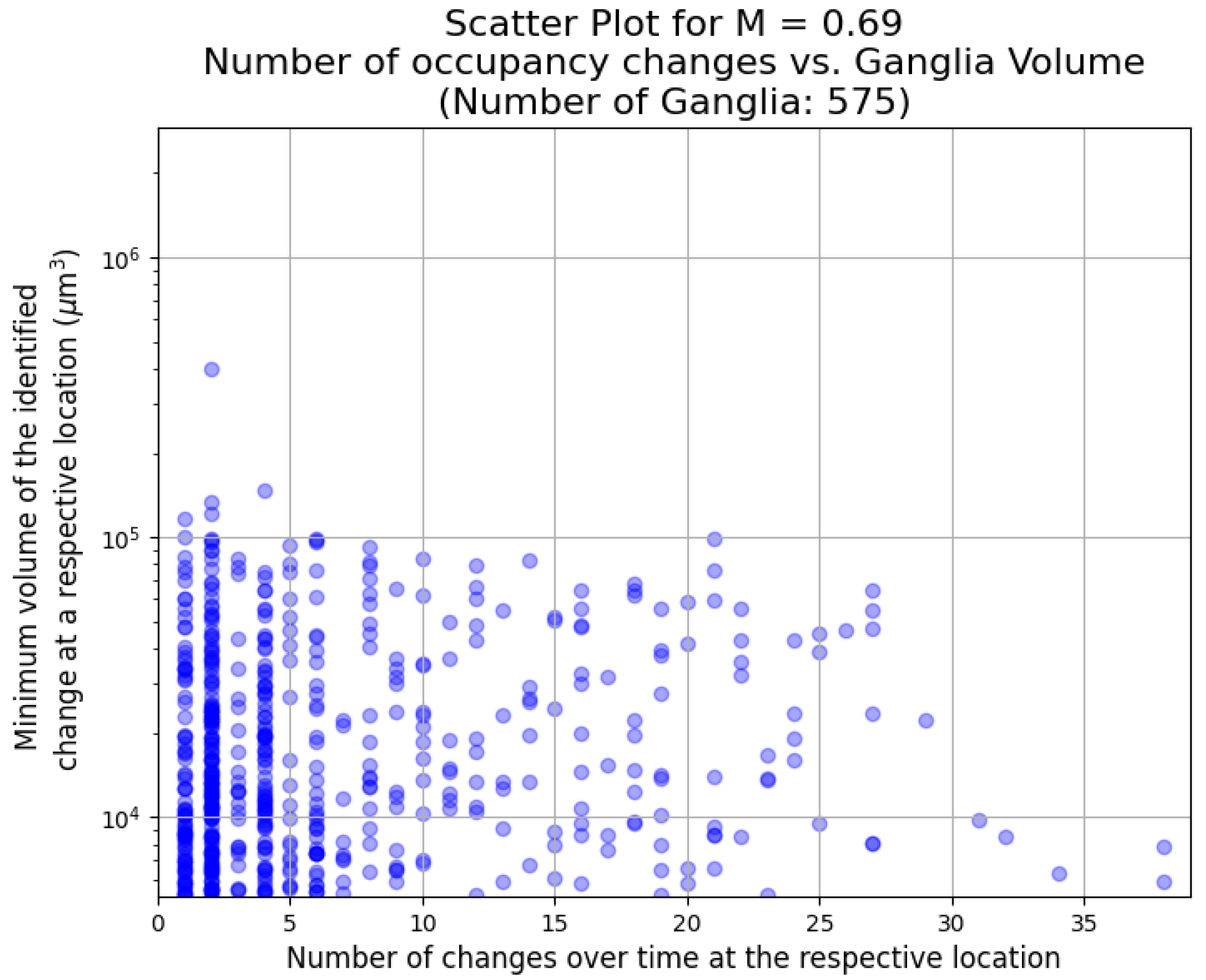



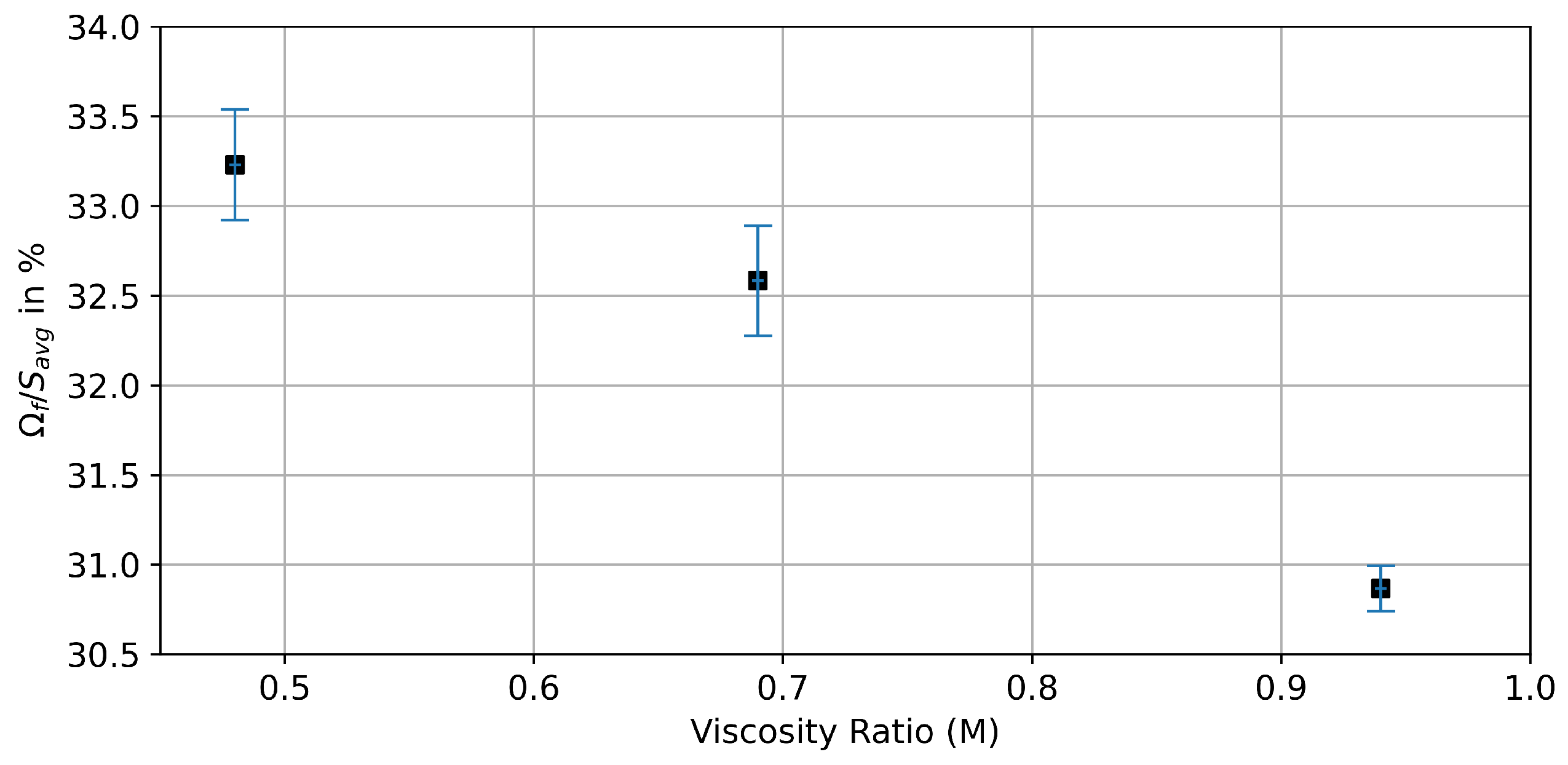
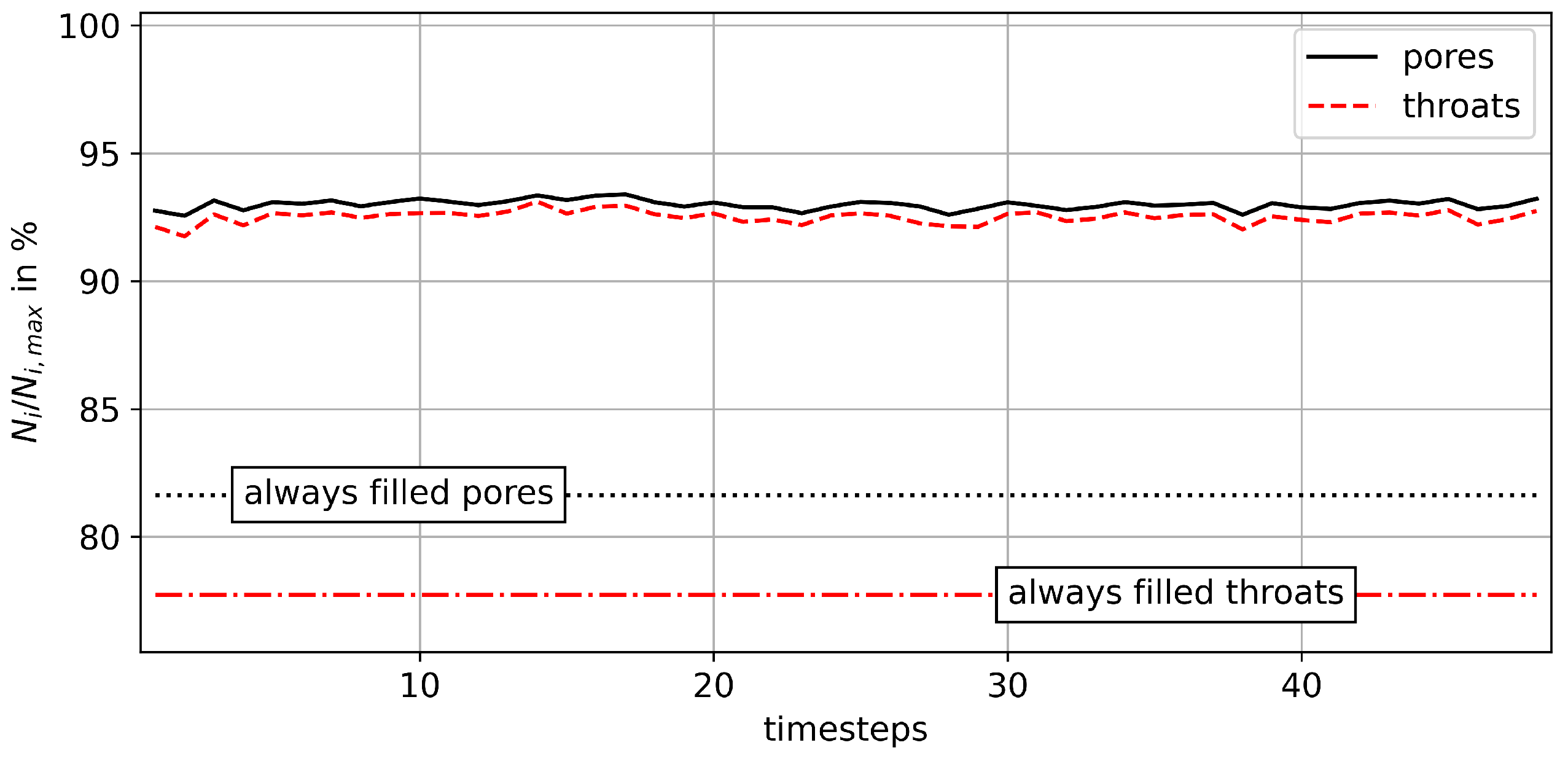
| Viscosity Ratio | Total Flow Rate (mL/min) | Glycerol: Brine | Capillary Number |
|---|---|---|---|
| 0.94 | 0.1 | 0 | 1.6 |
| 0.69 | 0.084 | 1:9 | 1.6 |
| 0.48 | 0.075 | 2:8 | 1.7 |
Disclaimer/Publisher’s Note: The statements, opinions and data contained in all publications are solely those of the individual author(s) and contributor(s) and not of MDPI and/or the editor(s). MDPI and/or the editor(s) disclaim responsibility for any injury to people or property resulting from any ideas, methods, instructions or products referred to in the content. |
© 2024 by the authors. Licensee MDPI, Basel, Switzerland. This article is an open access article distributed under the terms and conditions of the Creative Commons Attribution (CC BY) license (https://creativecommons.org/licenses/by/4.0/).
Share and Cite
Heijkoop, S.; Rieder, D.; Moura, M.; Rücker, M.; Spurin, C. A Statistical Analysis of Fluid Interface Fluctuations: Exploring the Role of Viscosity Ratio. Entropy 2024, 26, 774. https://doi.org/10.3390/e26090774
Heijkoop S, Rieder D, Moura M, Rücker M, Spurin C. A Statistical Analysis of Fluid Interface Fluctuations: Exploring the Role of Viscosity Ratio. Entropy. 2024; 26(9):774. https://doi.org/10.3390/e26090774
Chicago/Turabian StyleHeijkoop, Selwin, David Rieder, Marcel Moura, Maja Rücker, and Catherine Spurin. 2024. "A Statistical Analysis of Fluid Interface Fluctuations: Exploring the Role of Viscosity Ratio" Entropy 26, no. 9: 774. https://doi.org/10.3390/e26090774






